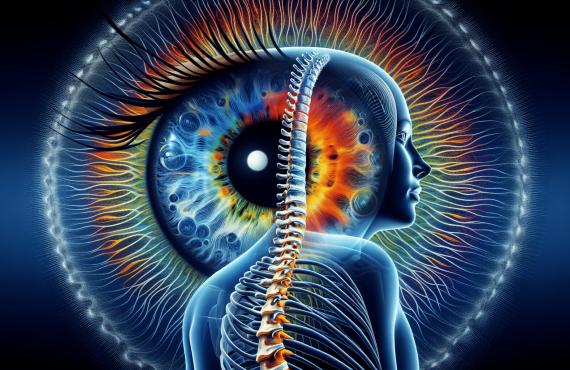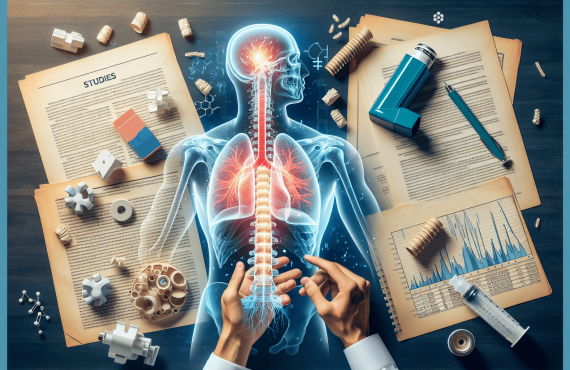If you suffer from migraines, you know just how debilitating they can be. The throbbing pain, sensitivity to light and sound, and nausea can leave you unable to do anything but lie in a dark room and hope for relief. But what if there was a natural, non-invasive treatment option that could help alleviate your migraines? That’s where chiropractic care comes in. At Henry Chiropractic, owned and operated by Dr. Craig Henry, and with the expertise of Dr. Aaron Hixon, they offer chiropractic techniques specifically tailored to help migraine sufferers find relief. Whether it’s through spinal manipulation, soft tissue mobilization, or other approaches, chiropractic care may be the solution you’ve been searching for.

This image is property of i0.wp.com.
Table of Contents
What is chiropractic care?
Chiropractic care is a form of alternative medicine that focuses on diagnosing, treating, and preventing disorders of the musculoskeletal system, particularly the spine. It is based on the belief that the body has the inherent ability to heal itself, and that proper alignment of the musculoskeletal system promotes optimal health.
Definition and principles of chiropractic care
Chiropractic care is a non-invasive and drug-free approach to healthcare. It is centered around the principle that the nervous system, which is composed of the brain, spinal cord, and nerves, is responsible for controlling and regulating the body’s functions. Through manual adjustments or manipulations of the spine and other joints, chiropractors aim to restore proper alignment and mobility to the musculoskeletal system, thus alleviating pain and promoting overall well-being.
Goals of chiropractic care
The primary goal of chiropractic care is to enhance the body’s natural ability to heal itself and maintain optimal health. Chiropractors aim to identify and correct structural imbalances and biomechanical dysfunctions that can cause pain, limit mobility, and impair overall bodily function. By addressing the root causes of these issues, chiropractic care seeks to provide long-term relief and improve the quality of life for individuals.
Understanding migraines
Definition of migraines
Migraines are a type of headache characterized by severe and recurring pain, often accompanied by other symptoms such as nausea, vomiting, and sensitivity to light and sound. They can last anywhere from a few hours to several days and can significantly impact a person’s daily activities.
Causes of migraines
The exact cause of migraines is unknown, but they are considered to be a complex neurological condition. Research suggests that various factors, such as genetics, hormonal changes, certain foods, stress, and environmental triggers, can contribute to the development of migraines. It is believed that these factors can lead to changes in the brain and its blood vessels, resulting in the characteristic symptoms of migraines.
Symptoms of migraines
Migraines often present with a throbbing or pulsating pain on one side of the head, although it can affect both sides as well. The pain is typically moderate to severe and can worsen with physical activity. Other common symptoms include sensitivity to light and sound, nausea, vomiting, and visual disturbances such as aura or flashing lights. Migraines can also cause fatigue, dizziness, and difficulty concentrating, which can greatly affect a person’s quality of life.
Chiropractic care for migraines
How chiropractic care can help with migraines
Chiropractic care can offer a non-pharmacological approach to managing migraines. By addressing spinal misalignments and improving overall spinal function, chiropractors can potentially reduce the frequency and intensity of migraines. They focus on optimizing the communication between the brain and the body, which may help alleviate the pain and other symptoms associated with migraines.
Benefits of chiropractic care for migraines
One of the key benefits of chiropractic care for migraines is that it aims to treat the underlying causes rather than just masking the symptoms with medication. This holistic approach can provide long-term relief and help improve the overall well-being of individuals suffering from migraines. Additionally, chiropractic care is generally safe and non-invasive, making it a viable alternative for those who prefer to avoid medications or are looking for complementary therapies.
Techniques used in chiropractic care for migraines
Chiropractors employ a variety of techniques to address migraines, depending on the individual’s specific needs and condition. One common technique is spinal manipulation or adjustment, which involves applying precise force to the spine to correct misalignments and restore proper function. Other techniques may include soft tissue therapy, rehabilitative exercises, lifestyle counseling, and nutritional recommendations. The chiropractor will tailor the treatment plan to each patient’s unique circumstances to achieve the best possible outcomes.
Research on chiropractic care for migraines
Overview of research studies
Several studies have investigated the effectiveness of chiropractic care in managing migraines. While more research is still needed, the existing studies suggest that chiropractic interventions can be beneficial for individuals suffering from migraines. These studies typically evaluate the impact of spinal manipulations or adjustments on migraine frequency, intensity, and duration. They also assess the safety and patient satisfaction with chiropractic care for migraines.
Findings and outcomes
The findings of research studies on chiropractic care for migraines have been promising. Some studies have reported a significant reduction in the frequency and severity of migraines following chiropractic treatment. Others have shown improvements in headache-related disability, medication usage, and overall quality of life. However, it is important to note that individual responses to chiropractic care can vary, and further research is needed to establish the long-term effectiveness of chiropractic interventions for migraines.

This image is property of arrowheadhealth.com.
Choosing a chiropractor for migraines
Questions to ask when selecting a chiropractor
When choosing a chiropractor for migraines, it is important to ask relevant questions to ensure that you receive appropriate and safe care. Some questions to consider asking include:
- Are you licensed and certified?
- What experience do you have in treating migraines?
- What techniques do you use to address migraines?
- Do you have any testimonials or success stories from patients with migraines?
Asking these questions can help you determine the chiropractor’s expertise and compatibility with your specific needs.
Considerations for finding a reliable chiropractor
Finding a reliable chiropractor involves considering a few important factors. Firstly, check if the chiropractor is licensed and certified by the appropriate regulatory authorities. Look for reviews and testimonials from previous patients to get an idea of the chiropractor’s reputation and track record. Additionally, consider the chiropractor’s experience and specialization in treating migraines. It is also helpful to find a chiropractor who communicates effectively, listens to your concerns, and involves you in the decision-making process regarding your treatment plan.
What to expect during a chiropractic session for migraines
Initial consultation and assessment
During the initial consultation with a chiropractor for migraines, you can expect a thorough evaluation of your medical history, lifestyle factors, and migraine symptoms. The chiropractor will also conduct a physical examination, which may include assessing your spinal mobility, posture, and muscle tension. This assessment helps the chiropractor understand your condition and develop an appropriate treatment plan.
Treatment plan and frequency
Based on the assessment findings, the chiropractor will create a personalized treatment plan tailored to your specific needs and goals. The treatment plan may involve a series of spinal adjustments, soft tissue therapy, lifestyle modifications, and home exercises. The frequency of chiropractic sessions for migraines varies depending on the severity of your condition and your response to treatment. Typically, individuals may initially require more frequent visits, which can gradually decrease as their condition improves.
Possible side effects and risks
Chiropractic care is generally safe when performed by a licensed and experienced chiropractor. However, some individuals may experience mild side effects, such as temporary soreness or stiffness in the treated area. These side effects usually dissipate within a day or two. Rarely, more serious complications such as herniated disc or worsening of existing conditions may occur, but these risks are extremely low. It is important to communicate any concerns or unexpected changes in symptoms to your chiropractor to ensure the proper management of your care.

This image is property of www.verywellhealth.com.
Testimonials and success stories
Real-life experiences of patients
Many individuals have reported positive experiences with chiropractic care for migraines. They have shared how chiropractic interventions have helped them manage their migraines and improve their overall quality of life. Patients often highlight the effectiveness of Chiropractic adjustments in reducing the frequency and severity of migraines, as well as the positive impact on their daily activities and emotional well-being.
Impact of chiropractic care on their migraines
Patients who have undergone chiropractic care for migraines have reported significant improvements in their condition. They often describe experiencing fewer migraine episodes, milder pain intensity, and shorter durations of migraines. Additionally, many patients have expressed reduced reliance on medication and improved ability to engage in regular activities without the fear of triggering a migraine. The positive impact of chiropractic care on their migraines has allowed them to regain control over their lives and enjoy a better quality of life overall.
Combining chiropractic care with other treatments
Benefits of combining chiropractic care with other therapies
While chiropractic care can be effective on its own, some individuals with migraines may benefit from combining it with other treatments. Combining chiropractic care with other therapies, such as acupuncture, massage therapy, or physical therapy, can provide a comprehensive and multi-dimensional approach to managing migraines. These complementary therapies can further address any underlying issues contributing to migraines and enhance the overall effectiveness of the treatment.
Collaboration with medical professionals
It is important to note that chiropractors often work collaboratively with medical professionals, such as primary care physicians or neurologists, to provide holistic care for individuals with migraines. Chiropractors are trained to recognize when a patient may require additional medical intervention or diagnostic testing. They can refer patients to the appropriate healthcare professionals if necessary, ensuring that individuals receive comprehensive and coordinated care.

This image is property of www.flexchiros.com.
Costs and insurance coverage for chiropractic care
Average costs of chiropractic sessions
The cost of chiropractic sessions can vary depending on factors such as geographical location, complexity of the condition, and the chiropractor’s experience and expertise. On average, a chiropractic session for migraines can range from $30 to $200 per session. Initial consultations may involve additional costs, while subsequent sessions may be more affordable. Some chiropractors offer discounted packages or membership plans to make chiropractic care more accessible and affordable for patients.
Types of insurance that may cover chiropractic care
Many health insurance plans provide coverage for chiropractic care, although the specific coverage may vary. It is advisable to contact your insurance provider to inquire about the details of your coverage, including the extent of coverage, copays, and any limitations or restrictions. Depending on your insurance plan, you may need a referral from a primary care physician or a pre-authorization for chiropractic treatment. Understanding your insurance coverage can help you plan and budget for chiropractic care for migraines.
Conclusion
Chiropractic care offers a holistic and non-invasive approach to managing migraines. With its focus on addressing the underlying causes and optimizing spinal function, chiropractic interventions can be an effective and safe treatment option for individuals suffering from migraines. Research suggests that chiropractic care can reduce the frequency, severity, and duration of migraines, improving the overall quality of life for patients. By selecting a reputable chiropractor and working collaboratively with other healthcare professionals, individuals can benefit from a comprehensive and integrative treatment approach. Considering the potential long-term benefits and the absence of medication-related side effects, chiropractic care is definitely worth considering for individuals seeking a natural and non-pharmacological solution to their migraines.

































































